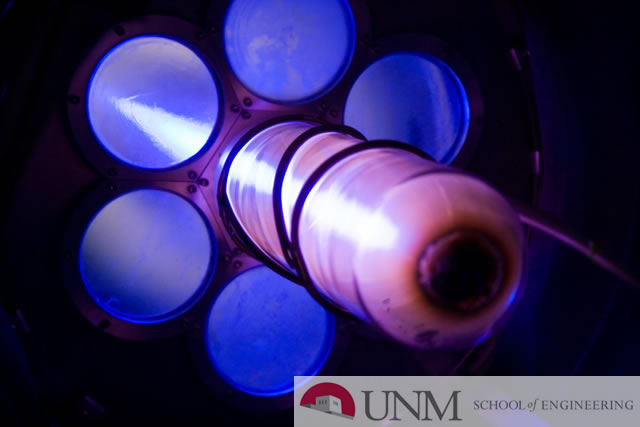
Electrical and Computer Engineering ETDs
Publication Date
7-21-2008
Abstract
Infrared detectors in the mid-wave infrared (MWIR) (3-5μm) and long-wave infrared (LWIR) (8-12μm) have many applications in military, industrial and medical fields. The state-of-the-art photodetectors based on Hg1-xCdxTe (MCT) have large signal over noise ratio and their bandgap can be tuned to span 1-32 μm wavelength range. However, large tunneling and Auger dark currents due to low electron effective mass in MCT detectors require operation at cryogenic temperatures (77-100 K). The cooling requirement limits the lifetime, adds weight and expense and increases the power consumption of the infrared system. There is a concerted effort to develop photonic detectors operating at higher temperatures. InAs/GaSb strained layer superlattice (SLS) photodectors are now considered as a promising technology for both MWIR and LWIR wavelength ranges. The bandgap of the SLS can be adjusted by controlling the thickness of the constituent InAs and GaSb layers during the growth process. InAs/GaSb SLS can also span the 3-30 μm wavelength range. Moreover, the large splitting of the energy levels of the different valence subbands in SLS contribute to the suppression of Auger recombination. The recently proposed nBn heterostructure design has demonstrated a 100 K increase in background-limited infrared photodetection (BLIP) for InAs-based device, by decreasing Shockley-Read-Hall generation currents and by suppressing surface currents using specific processing. This work is focused on combining the nBn detector design with InAs/GaSb superlattice material utilizing an AlGaSb barrier layer to improve detector performance and to increase the operating temperature of Focal Plane Arrays. This thesis covers three topics: Optical and electrical characteristics of single pixel devices in both the MWIR and LWIR, the reduction of surface leakage currents by using a shallow isolation etch for definition of the top contact mesa and comparison between nBn detector and PIN LWIR detectors.
Keywords
Infrared detectors, Superlattices as materials, Heterostructures, Auger effect.
Document Type
Thesis
Language
English
Degree Name
Electrical Engineering
Level of Degree
Masters
Department Name
Electrical and Computer Engineering
First Committee Member (Chair)
Lester, Luke
Second Committee Member
Dawson, Ralph
Recommended Citation
Bishop, Greg. "InAs/Ga(In)Sb superlattice based infrared detectors using nBn design." (2008). https://digitalrepository.unm.edu/ece_etds/34
